Feeding table scraps to chickens isn’t a new idea. But then again, neither were smoke detectors when Matt Rogers co-founded Nest in 2010, and that worked out pretty well.
Rogers is back at it, this time with fellow Nest alumnus Harry Tannenbaum. The duo and their team at Mill have cooked up what is probably the world’s heaviest, most expensive, and most sophisticated kitchen waste bin.
Mill’s aim is to eliminate carbon emissions that result from the decomposition of food waste. The startup isn’t the first company to tackle the problem, but it does have a unique approach. Where most other companies focus on large sources like grocery stores or restaurants, Mill is for people’s homes. Its bin grinds and dehydrates food, which the company then collects via the U.S. Postal Service and sells to farmers as chicken feed. As circular economy companies go, this one is pretty clever.
Mill sent me one a few months ago to test, and I proceeded to fill it with table scraps, melon rinds, corn cobs, and whatever else was on the extensive list of food waste it said it could devour. I wanted to see if the Mill bin could find its way into our daily routine while reducing the climate impact of our waste stream.
The short answer: It mostly did, with some notable hiccups.
The bin itself and any consumables are free, included in the subscription ($396 annually or $45 monthly, though the monthly plan tacks on a $75 fee to deliver the bin). Boxes and return shipping for the grounds are also included.
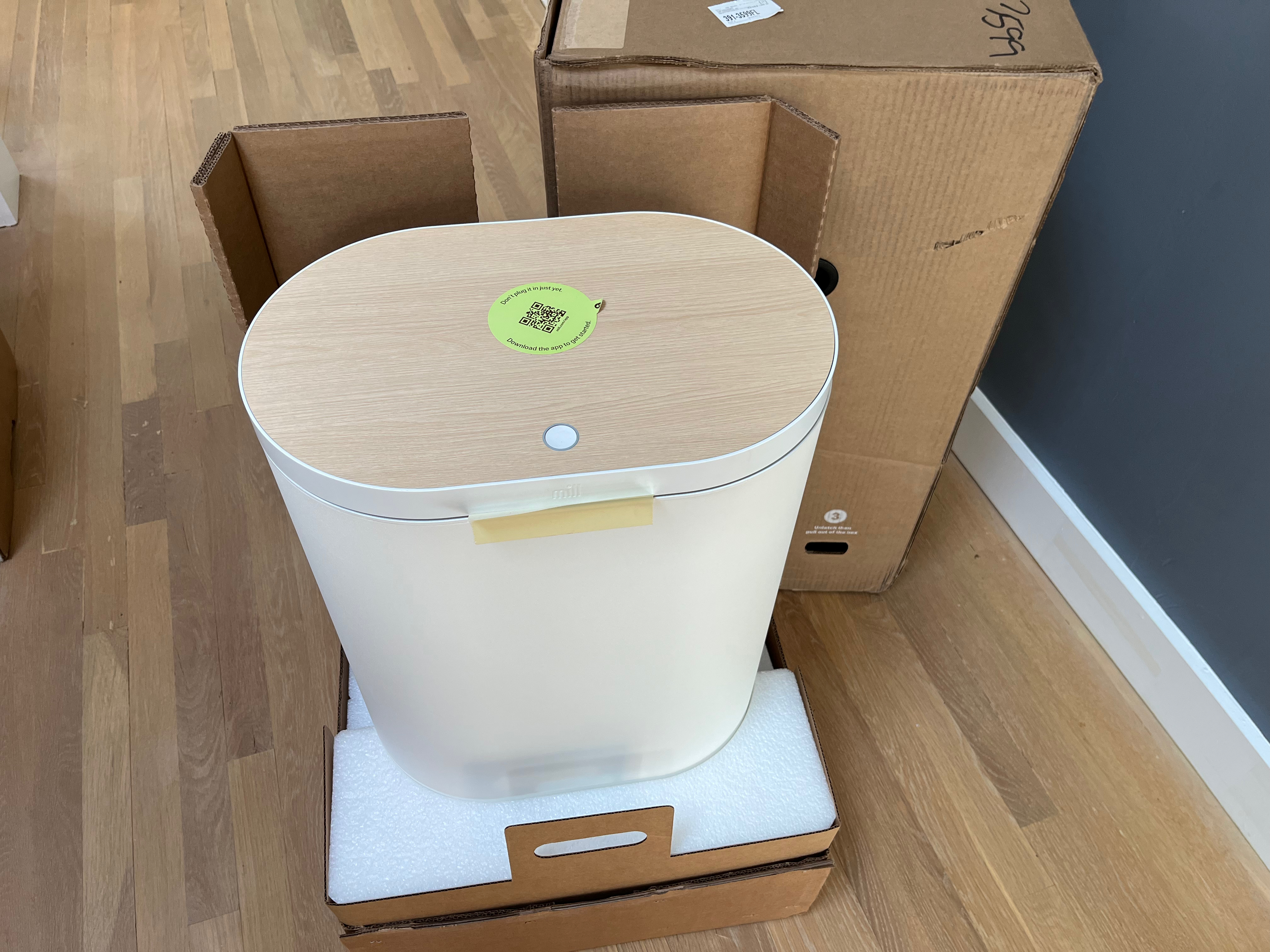
Mill’s bin looks like a very nicely designed kitchen waste bin. The sides are a matte white, the foot pedal that operates the lid is gray, and the lid itself sports a faux blond wood finish with some clever shy tech hidden underneath (more on that later). A button on the lid serves to activate or deactivate the kid/pet lock. At the base of the back, there’s a large hidden charcoal filter.
Stepping on the pedal activates a servo that flips open the lid. The actual interior is smaller than the outside suggests. A hefty metal bucket sits within, and inside the bucket is a set of augers that grind the food waste to bits. The setup looks kind of like a giant bread machine.
At the end of each day, the bin weighs any new additions and gets to work. The start time is set via a well-designed companion app. It also asks you to name the bin (I named ours “Munchie”). Our kitchen doesn’t have any room near an outlet for the bin, so it sat around the corner in the family room. Since that’s where we watch TV, I set it to start grinding at 10:30 p.m.
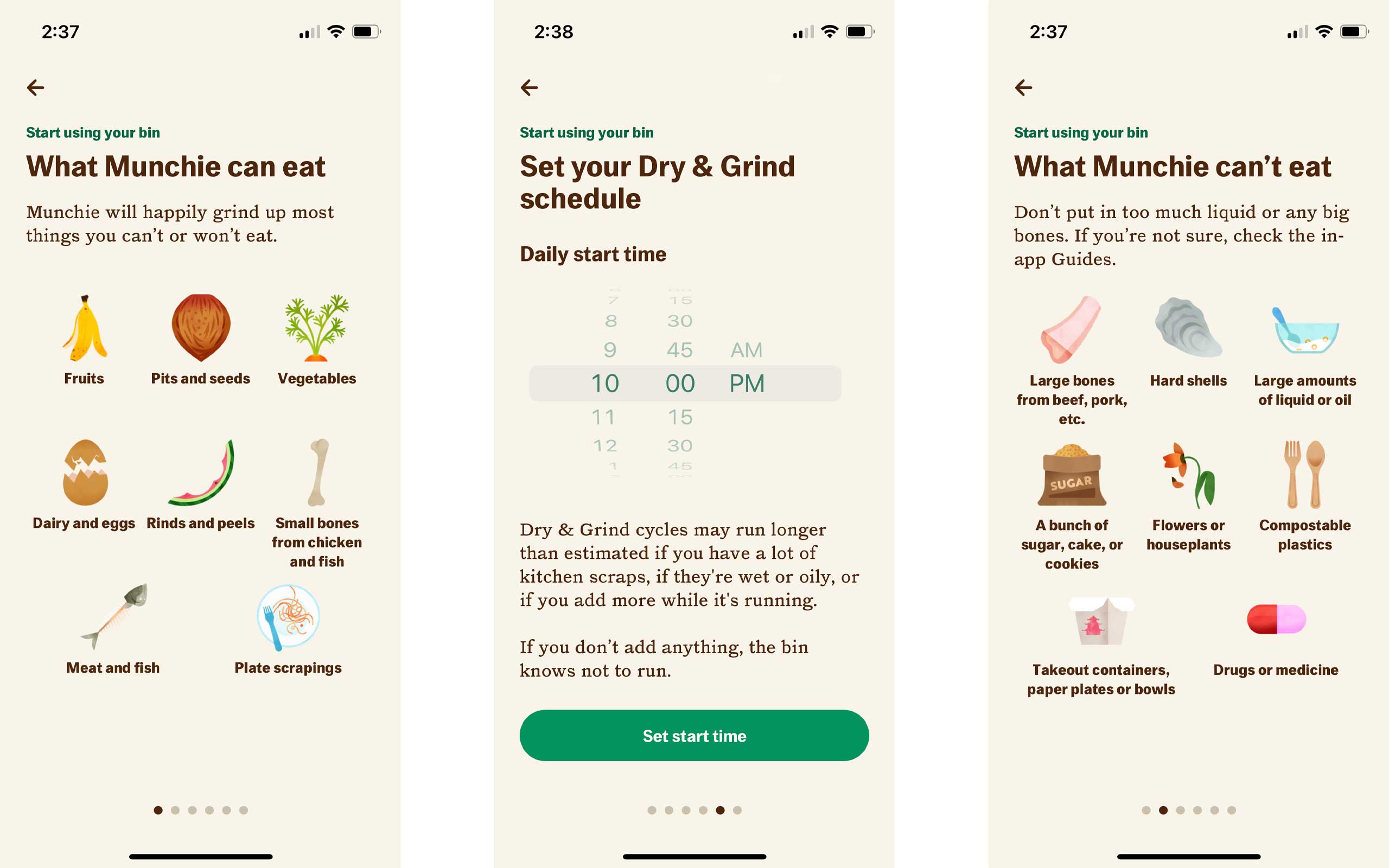
Once that time arrives, the bin locks with a sudden (and pretty loud) click of a solenoid and grinding commences. Depending on what you’ve scraped in, the process can be relatively quiet or the bin can creak and groan like a 17th-century Spanish galleon. At some point, a heater and fan turn on to dehydrate the scraps.
You can keep track of progress in the app or by observing the lights that shine through the faux wood top. It’s a clever bit of tech that tells you when the lid is locked, when the augers are grinding, or when the heaters are drying the grounds.
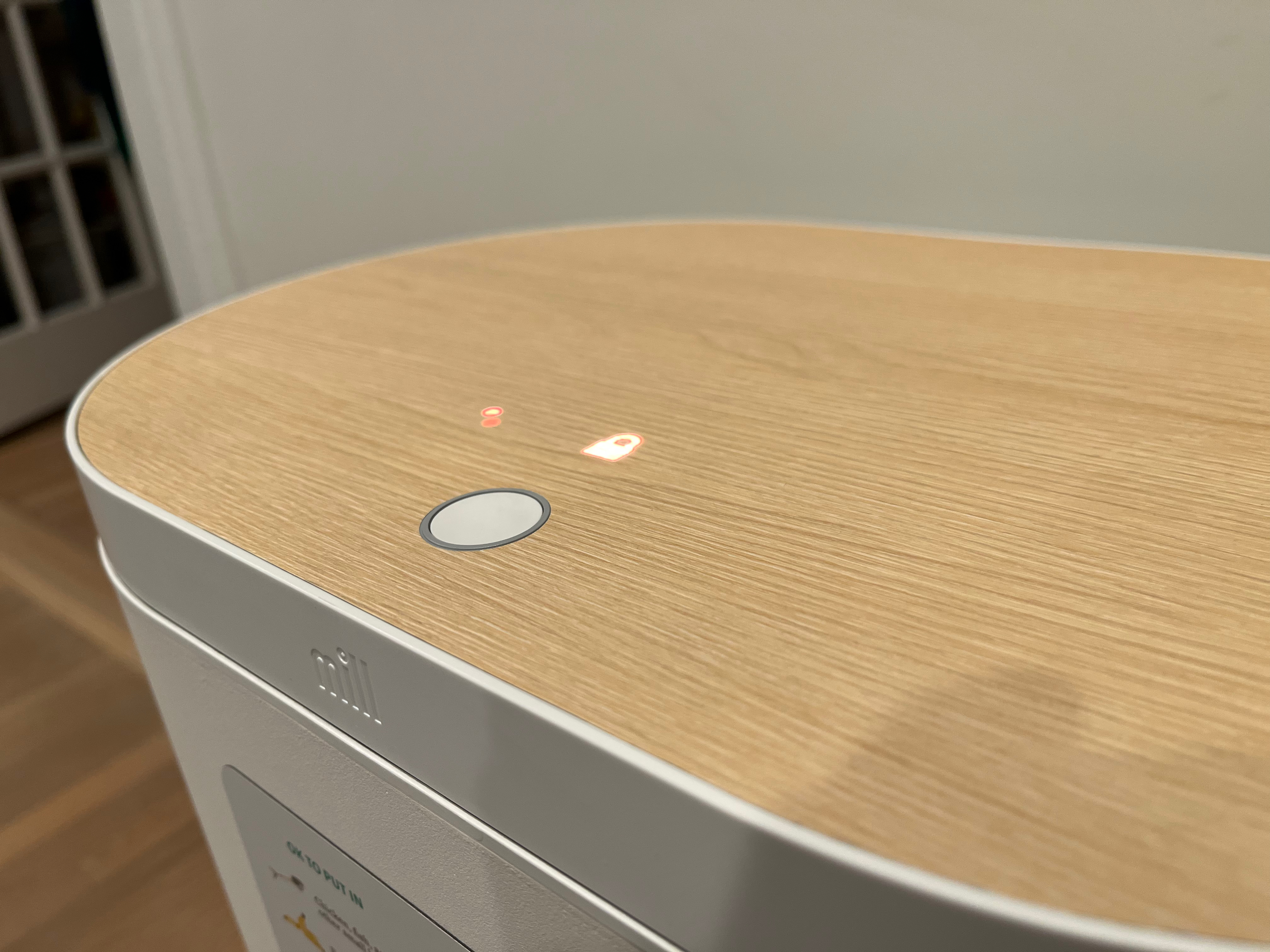
Under ideal conditions, the whole process is done by the time you’re up for breakfast. In most cases, I’d say that’s true. You can open the app at any time to get an estimate for how long the grinding and drying process will last. Usually, it’s accurate. Sometimes, it’s not.
One night, I think I pushed the bin to its limits. With it nearly full of grounds, I added apple peels, an apple core, egg shells, table scraps, and an entire cantaloupe that had been hiding a surprisingly rotten smell inside its rind. I had chopped up the melon as the app suggested. At 10:30 p.m., I was told it would take seven to nine hours to complete the cycle. At 7:30 a.m. the next day, it said it would take another hour and three-quarters. At noon, its estimate hadn’t changed. By 3:30 p.m., the estimate ticked up to 2:10 remaining. Finally, it finished at 6 p.m., 19.5 hours after starting.
This wasn’t the first time it had underestimated the time required. Not the end of the world since you can double-click the button on the lid to cancel the cycle and add more scraps, but it does mean that the fan was running literally night and day. It’s not loud, but it’s not quiet, either.
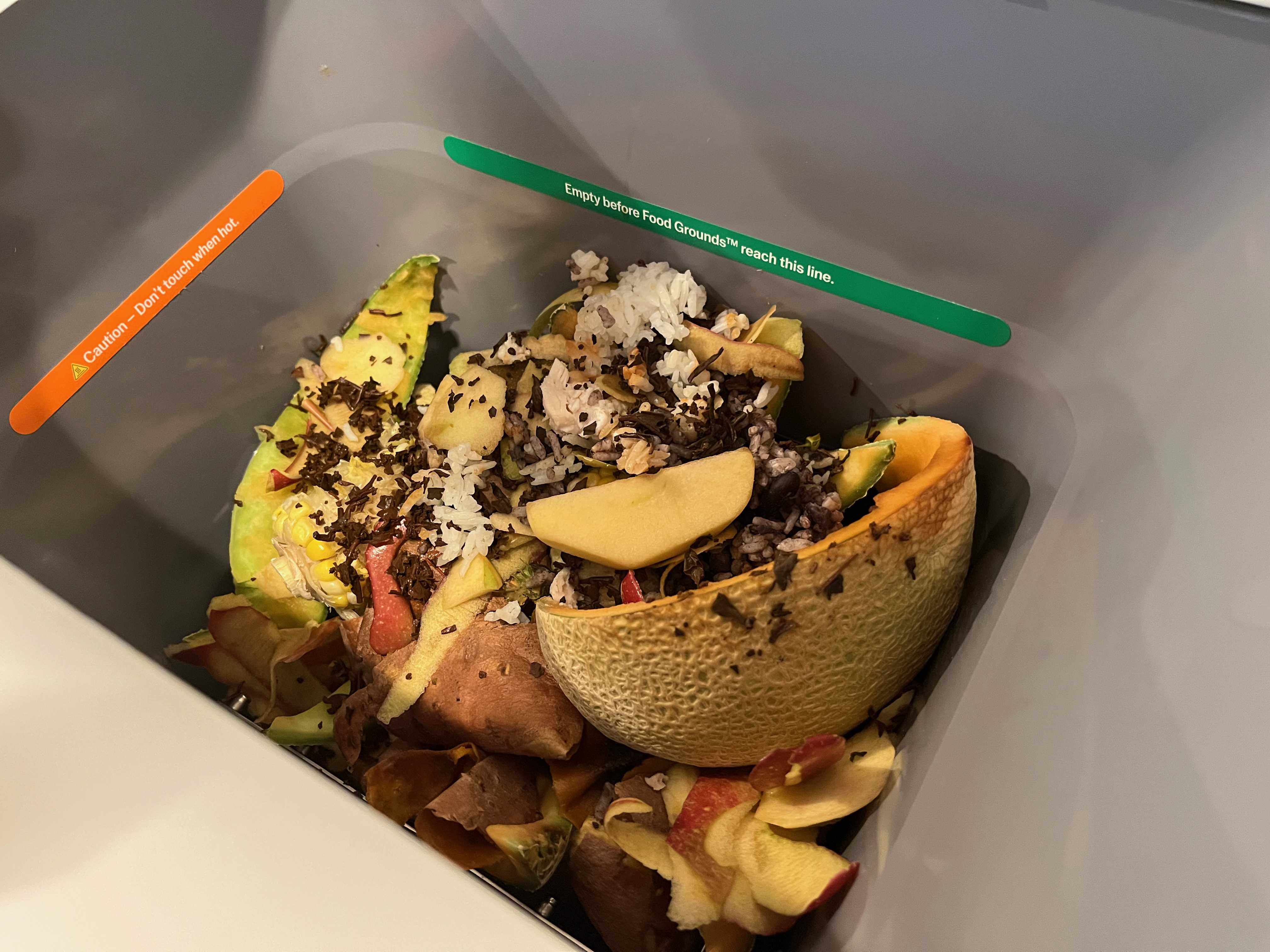
When the bin is full, it’ll send you a notification on your phone. To empty, just pop the lid, pull the handle to heave the bucket out of the bin, and dump the grounds into the supplied plastic bag. The grounds are shelf stable. Ours actually smelled pretty good, I thought, kind of like soy sauce. When the bag is full, toss it in an included prelabeled box. The boxes even have adhesive on the flaps so you don’t have to tape it yourself. (For some reason, I really appreciated that.) When ready, just tell the app and it arranges for the USPS to pick it up the next day. I put the box on the front porch in the morning, and our mail carrier picked it up that afternoon.
Generally, the process was pretty smooth, with one notable exception. I woke up on Father’s Day morning to a light flashing on the lid. The augers were jammed, though the cause wasn’t immediately obvious. Feeling a bit lazy, I left the bucket in the bin and poked around for about 20 minutes trying to free things up. No luck.
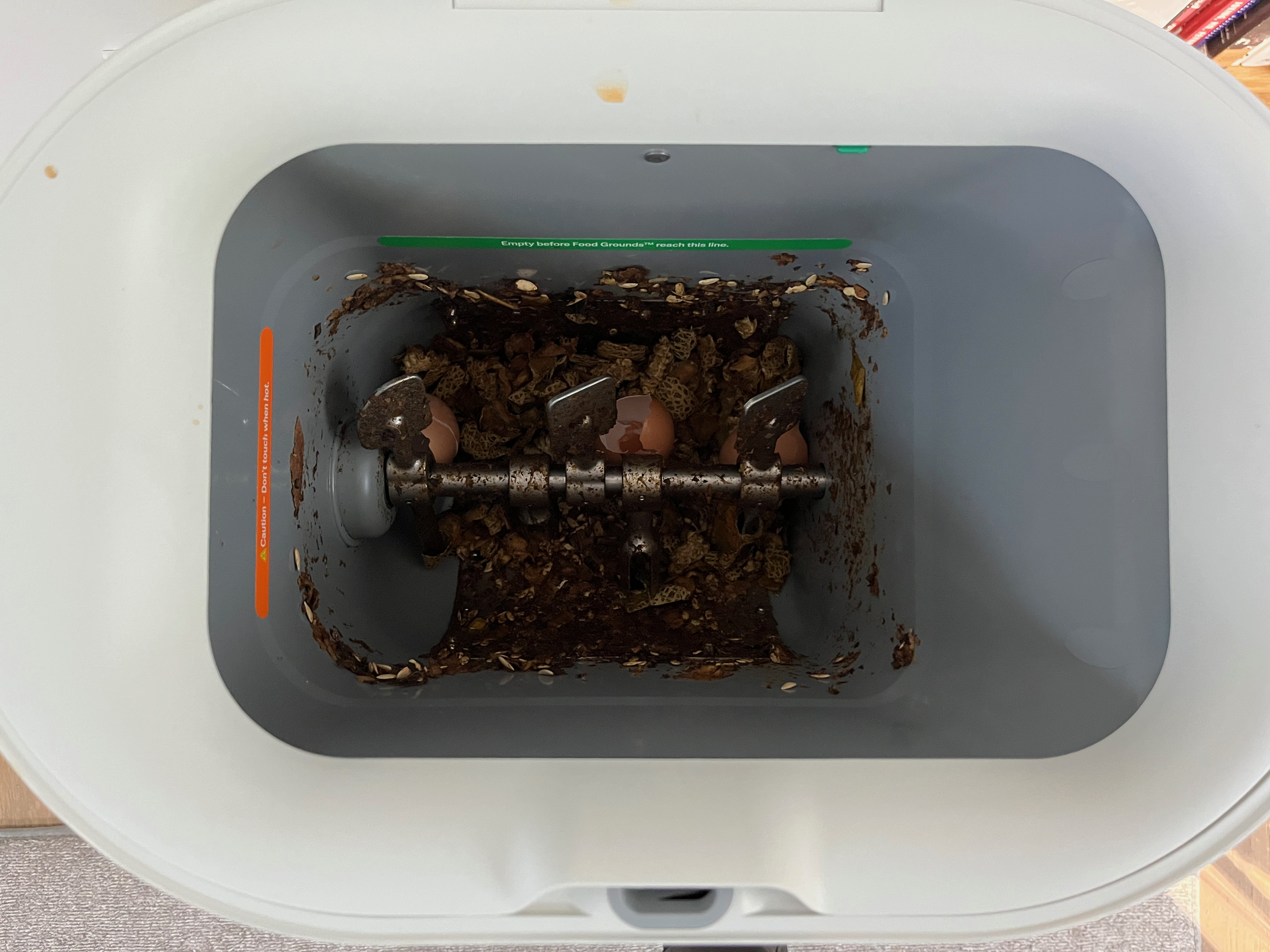
The next morning, I followed the app’s instructions and removed the bucket and dumped the loose grounds into the mail bag. At first glance, I noticed some of the grounds had been baked into the side of the bucket. I assumed this was the cause and chipped away at it with some disposable chopsticks. After a while, my father-in-law suggested that the jam might have something to do with small strands of fiber that had become wrapped around the augers, so I pulled as much off as I could. After 20 minutes of chipping and yanking, the augers were free once more.
Following the jam, Mill told me that there were a few potential causes. Fibrous material had been causing people more problems than expected, so the team had updated the app’s guidance on what should and shouldn’t go in the bin. Corn husks were removed from the approved list, for example (something we hadn’t added). Adding high sugar content scraps to a nearly full bin was also causing jams. (That full cantaloupe might have been to blame.) Lastly, the company has been refining the software that controls cycle time and temperature, cutting an hour of cycle time on average.
“Right now, we err on the conservative side to ensure there are no smells or potential for bacteria,” Mill’s Suzy Sammons told me. “As we get more data from customers and our field trials, that software gets better and better at predicting minimum length of cycle time and how much heat we need in the bin, and that reduces the likelihood of a jam.” She added that the company monitors the bins remotely, reaching out to customers with jammed bins to help them troubleshoot it, and that software updates have reduced the likelihood of a jam by at least half. Plus, if any of the modular parts are broken, Mill will send a new one for free.
What’s next for Mill?
Mill said that early data suggests that people are getting comfortable with using the bins. Almost all the company’s users had used the bin more than twice a day. In a pilot with the city of Tacoma, Washington, more than half of survey respondents said they hadn’t previously used the city’s curbside organics service, meaning they were likely sending food waste to the landfill.
Curbside composting is probably Mill’s most direct competitor. Some cities offer it free alongside waste and recycling collection while others charge a nominal fee, usually about $10 or $20 per month. That’s significantly less than Mill charges, though the startup is working with municipalities to partially or fully subsidize the cost of the bin subscription.
In day-to-day use, I found the Mill bin to be both easier and more challenging to use than curbside composting. On the plus side, the Mill bin went weeks before needing to be emptied, and when I did, the grounds didn’t have any foul odors. Our compost bin, which lives under the sink, needs to be emptied every few days, and opening it is always an olfactory adventure. On the minus side, the Mill bin jammed, something our “dumb” compost bin never does, and Mill’s list of “approved” waste is more nuanced than with most composting services. The app makes it easy to check, but it’s not often that people turn to apps before throwing something away.
Another thing that stood out was the fact that the Mill bin needs a power supply. That means you can’t stash it just anywhere in your kitchen. Our garbage and recycling bins live in a slide-out drawer, so our kitchen layout doesn’t have a natural place for another large waste bin. That meant the Mill bin went just around the corner, into the family room. The bin’s sleek design meant it didn’t stand out or draw disapproving glances, but when cycles went long, the fan did get a bit tiresome. Overall, the power requirement is neither good nor bad — different homes will have different layouts, and it may or may not be an issue for you.
Can Mill find its way into enough homes to keep a significant amount of food waste out of landfills? Much will depend on bringing the cost down to the point where it’s either free or competitive with existing curbside compost services. The power and space requirements may give some people pause, and the list of what can and can’t go into the bin can be mentally taxing at first. But there are a lot of things that are right, and Mill’s ability to update the bin’s software gives it the flexibility to keep at it until things are closer to perfect.
Is this another billion-dollar, environmentally friendly product on the order of Nest? It’s still a bit early to tell, but for the climate’s sake, I hope so.
Correction: Mill’s annual subscription plan costs $396, not $495 as originally stated.
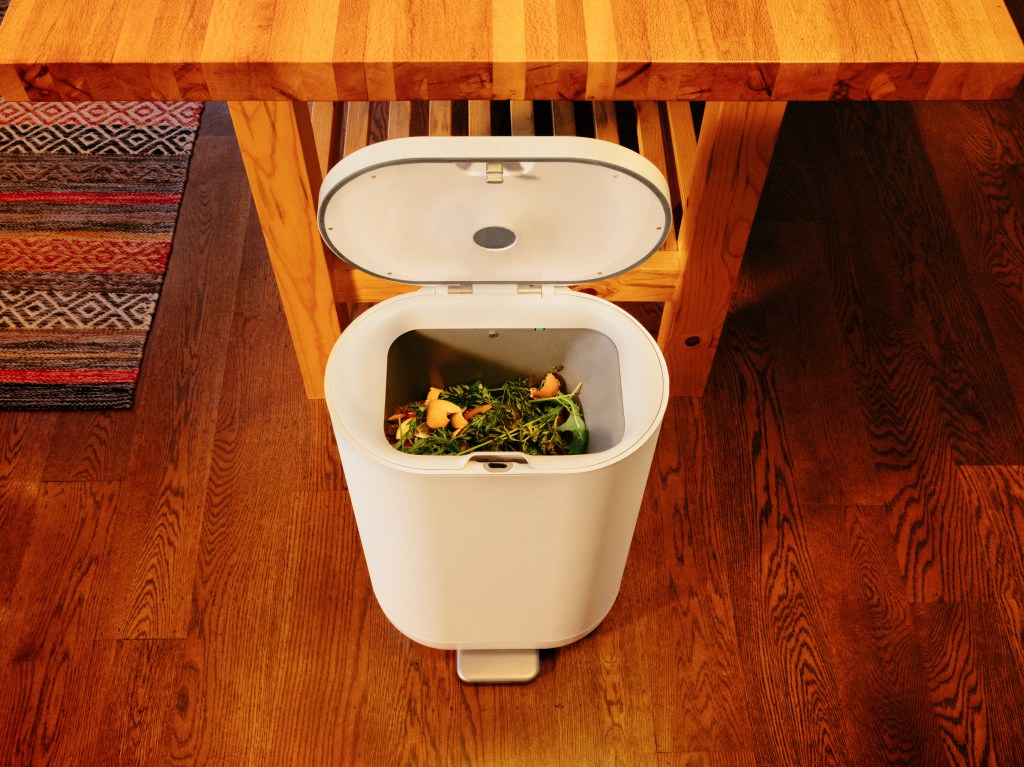






























Comment